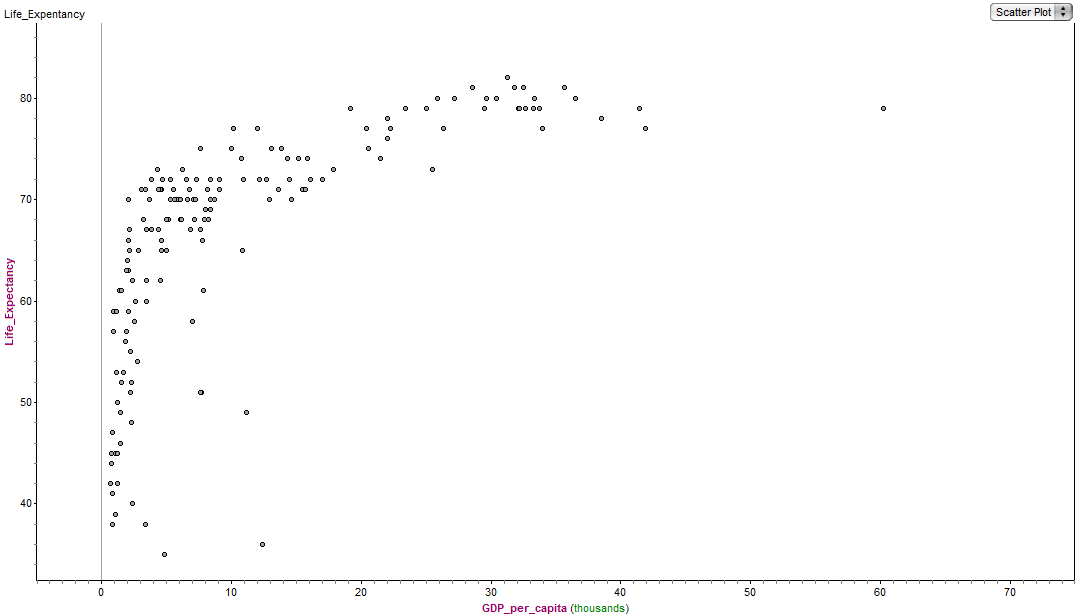
The GMAT format has changed periodically over the years, resulting in different versions. The GMAT that you can take today in 2025 is sometimes referred to by different names: the GMAT, the GMAT Focus, the GMAT 11th edition. All of these refer to the same exact exam. So, what is the current format of the GMAT? It’s a 135-minute test that consists of three separate 45-minute sections: Quantitative Reasoning, Verbal Reasoning, and Data Insights. Let’s take a closer look at each of those GMAT sections!
Table of Contents
- GMAT Sections and Overall Exam Format
- Key Features in Each GMAT Section
- Quantitative Reasoning Section
- Verbal Reasoning Section
- Data Insights Section
- Differences Between the Old GMAT Sections and the Current GMAT Sections
GMAT Sections and Overall Exam Format
Here’s a breakdown of the GMAT exam format and section pattern:
| Section of the GMAT | How many questions? | Types of questions | Time limit |
|---|---|---|---|
| Data Insights | 20 | Multi-Source Reasoning Graphics and Table Interpretation Two-Part Analysis Data Sufficiency |
45 minutes |
| Quantitative | 21 | Problem Solving | 45 minutes |
| Verbal | 23 | Reading Comprehension Critical Reasoning |
45 minutes |
| Break | 10 minutes (Optional) | ||
| TOTAL EXAM STATS | 64 | 2 hours & 15 minutes |
GMAT Section Order
The chart above shows one possible order for the GMAT sections. However, before you start the exam, you’re allowed to pick what sections you’ll see and when. Doing a little GMAT math via the Fundamental Counting Principle, we know that selecting three sections for three slots gives us a total of 6 different possible arrangements:
- Quant, Verbal, Data Insights
- Quant, Data Insights, Verbal
- Verbal, Quant, Data Insights
- Verbal, Data Insights, Quant
- Data Insights, Quant, Verbal
- Data Insights, Verbal, Quant
And the optional 10-minute break can come after either the first section or the second section.
Which order should you pick? That’s up to you and depends on many different factors, such as which section you like the most, which section you find the easiest, and how well you sustain focus throughout the exam. We recommend that you take practice tests with different section orders to see which arrangement you most prefer. But, in general, we recommend starting with your strongest section first so that you can tackle it when your mind is most fresh.
Also, check out our article on GMAT pacing for tips on how to approach each section. Pacing is a huge component of the GMAT and can influence your decision on section order as well. A strong section is one that you not only have high accuracy on but also consistently finish on time, too.
Key Features in Each GMAT Section
Questions Adjust in Difficulty Based on Your Performance
All three sections employ a computer-adaptive-testing (CAT) format. As you move through each section, the algorithm adjusts the difficulty of each new question based on your overall performance thus far. If you are doing well, on average you get more challenging questions. If you are having trouble, on average you will get easier questions.
Question Review and Edit
Although you cannot skip questions and must submit an answer before moving on to the next, you are allowed to edit your answers at the end of each section. As you work through the questions in a section, you can bookmark ones that you want to return to later. Then, at the end of a section (if you have time remaining), you will see a Question Review and Edit screen. At this point, you can return to any previous question to check your work. However, you can only edit up to a maximum of 3 answers.
Each Section is Weighted Equally in Your Overall Composite Score
Your final, composite GMAT Score (on the scale of 205 to 805) is determined by all three sections. Note that in prior versions of the GMAT, only your quant and verbal scores factored into your composite score. This is because the original Integrated Reasoning section was scored on a separate scale.
But on the current GMAT, your Data Insights score—along with your Verbal and Quant scores—is factored into your final score, with each section weighted equally. For more details on how that calculation works, check out our GMAT Score Calculator.
Now that we’ve looked at each section as a whole, let’s look at them individually.
Quantitative Reasoning Section
The GMAT Quant section assesses your ability to reason mathematically on 5-answer multiple choice questions. It measures your critical thinking and problem-solving skills using mathematical concepts relevant to business and management.
Here are the highlights:
- Number of Questions: 21
- Time: 45 minutes
- Question Types: All multiple choice
- Topics: Arithmetic, algebra, and word problems
- Calculator: None!
Check our article about the kind of math that appears on the GMAT quant section for all the details. But you’re going to want to have a solid grasp on fundamental mathematical principles. And this is especially true since there’s no calculator available on this section. With roughly two minutes per question, you don’t get a lot of time. Thus, practicing your pacing is essential.
Verbal Reasoning Section
The GMAT Verbal Reasoning section evaluates your ability to comprehend written passages and to reason critically.
Here’s a top-level overview:
- Number of Questions: 23
- Time: 45 minutes
- Question Types: All multiple choice
- Topics: Reading Comprehension and Critical Reasoning
The Verbal section is all about how well you can analyze text. For the Reading Comprehension questions, that means extracting main ideas, identifying supporting details, and making inferences from either a short (~100 words) or longer passage (up to ~400 words). For Critical Reasoning questions, you’ll have to evaluate arguments, identify assumptions, and draw conclusions. Either way, reading actively is an essential skill to master.
For a more in-depth look, see our article on the GMAT Verbal Reasoning section.
Data Insights Section
The GMAT Data Insights section measures your ability to analyze and interpret data from various sources. This section reflects the modern business emphasis on data-driven decision-making.
Here are the highlights:
- Number of Questions: 20
- Time: 45 minutes
- Question Types: A variety!
- Topics: Data (tables, charts, graphs, etc.) and Data Sufficiency
- Calculator: Yes, you have access to an on-screen calculator with basic functions
Data Insights is the most unique section on the GMAT. With five different formats of questions, you’ll encounter a lot of variety in this shortest section. Ultimately, you’re tasked with analyzing data from multiple formats and sources, such as graphs, tables, and text passages. So, you’ll want to pay close attention to detail as you draw conclusions. Additionally, around one-third of this section is a question type known as Data Sufficiency, which tasks you not with solving math problems but with determining whether you have enough information to solve them.
Differences Between the Old GMAT Sections and the Current GMAT Sections
If you’re taking the GMAT for the first time in 2025, you can skip this section. The only version of the GMAT that you can take today is the one described above.
However, prior to 2024, the GMAT was a very different test with very different sections:
- Quantitative Reasoning: This included both Problem Solving (Multiple Choice) and Data Sufficiency questions.
- Also note that Data Sufficiency questions used to be a mix of “pure context” (think equations and number properties) and “real context” (primarily word problems involving real-world situations). However, on the current GMAT, you’ll only encounter “real context” Data Sufficiency problems.
- Additionally, the old GMAT tested geometry on both Problem Solving and Data Sufficiency questions. Nowadays, however, geometry is completely removed. No longer do you have to keep in mind all the different properties of various types of triangles!
- Verbal Reasoning: This consisted of Reading Comprehension, Critical Reasoning, and Sentence Correction questions. The now-defunct Sentence Correction question type tested your knowledge of all kinds of grammar rules.
- Integrated Reasoning: This section was similar to the current Data Insights section, but it did not include the Data Sufficiency question type.
So, if you took the old version of the GMAT in the past, you might want to sample a current GMAT diagnostic quiz to experience all the differences for yourself!
Lastly, see our What is the GMAT? article for a full look at the current-day test and common questions that arise.
Closing Thoughts
Knowing the GMAT format and the three GMAT sections is just the first piece of the puzzle. The GMAT requires critical thinking skills, mastery of several math and verbal content areas, and a host of test-taking strategies. At Magoosh, we can guide you from your first tentative steps to your final bold strides toward GMAT mastery. Get a Magoosh GMAT Premium Plan to access our expert-created lessons, practice questions with video explanations, and full-length practice tests!





